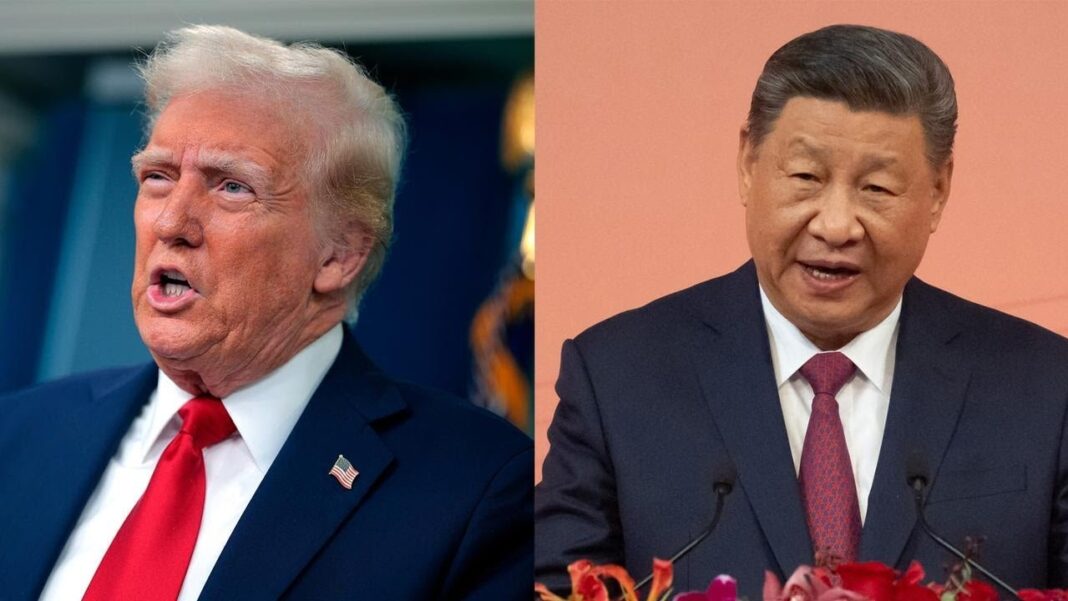A fresh round of tariffs has reignited tensions between the United States and China. The U.S. administration has imposed a 10% tariff on Chinese imports, effective at midnight, leading to immediate retaliation from Beijing. China has responded with a 15% tariff on U.S. crude oil, large displacement cars, and pickup trucks, alongside an ongoing investigation into Google for alleged anti-monopoly violations.
This latest trade conflict follows the Trump administration’s broader protectionist stance, which has previously targeted Canada and Mexico with tariffs but later saw temporary exemptions through diplomatic negotiations. However, the tone of discussions with China appears more aggressive, indicating that further escalations could be imminent.
Political Dynamics and Economic Fallout
The White House maintains that these tariffs are necessary to secure better trade terms with China, citing unfair trade practices and intellectual property concerns. However, concerns are growing within both Republican and Democratic circles over the long-term impact of these measures. Some lawmakers question whether the U.S. is as committed to its hardline stance as it once was or if negotiations with China could lead to concessions similar to those with Canada and Mexico.
Despite the rhetoric, China’s countermeasures appear measured, indicating that Beijing may be holding back from a full-scale economic offensive. Notably, soy products, a crucial U.S. export to China, remain untouched by tariffs, suggesting room for potential negotiation. However, China has signaled its willingness to escalate by targeting American companies operating in its market, such as the parent company of brands like Calvin Klein and Tommy Hilfiger.
Energy Prices and Consumer Impact
The trade war’s impact is not just limited to corporations and policymakers—it directly affects consumers. With increased tariffs on crude oil, coal, and agricultural machinery, the energy sector faces potential price volatility. Market analysts predict that rising costs could lead to higher gasoline and utility prices, ultimately burdening middle-class and low-income households the most.
Research suggests that the recent tariff hikes could cost the average American household an additional $1,200 per year. Those in the bottom 20% income bracket could see a 3% reduction in their disposable income, exacerbating financial struggles for families living paycheck to paycheck. Meanwhile, corporations facing higher import costs may pass these expenses onto consumers, leading to inflationary pressures across various industries.
Future Trajectories: What Lies Ahead?
With both sides firm in their positions, the future of U.S.-China trade relations remains uncertain. While President Trump has indicated that discussions with Chinese President Xi Jinping are forthcoming, no specific timeline has been confirmed. If negotiations fail to produce a resolution, the likelihood of additional tariffs and countermeasures remains high, potentially triggering further economic disruptions.
The implications extend beyond the U.S. and China. Countries like Canada and Mexico, which have faced similar tariff threats, are watching closely. The European Union and other trading partners may also face the ripple effects of this trade war, particularly in industries reliant on global supply chains. As China explores alternative trade partners, including those in the Middle East and Russia, the geopolitical balance of trade could shift significantly.
Conclusion: Navigating the Uncertain Road Ahead
The ongoing trade dispute presents a challenging scenario for businesses, policymakers, and consumers alike. If no resolution is reached, industries dependent on international trade will continue to face uncertainty, and consumers will bear the brunt of higher prices.
For businesses, diversifying supply chains and reducing dependence on single markets may be essential for long-term stability. Governments must balance protectionist policies with economic growth considerations, ensuring that trade tensions do not escalate into a full-blown economic downturn.
The next key moment will be the upcoming discussions between U.S. and Chinese leaders. Will diplomacy prevail, or will economic nationalism take precedence? The outcome will shape not just bilateral trade but global economic stability for years to come.
Disclaimer:
This article is based on publicly available information and expert analysis. It is not intended as financial or political advice. Readers should conduct their own research before drawing conclusions or making economic decisions.
Dr. Noah Alvarado is a global economist specializing in international trade policies and macroeconomic analysis. His research has been published in prominent journals.




